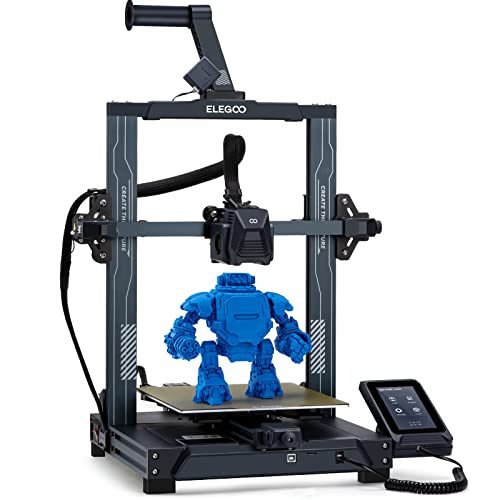Picking the right 3D printer can feel overwhelming, especially when you're just starting out. Let’s break it down so you can find the best fit for your needs as a beginner. Think about what you want to make and how you plan to use your 3D printer. Are you looking for something to print fun toys, simple prototypes, or more detailed models? Your goals will help narrow down your choices.
First things first, consider the type of 3D printer you want. FDM (Fused Deposition Modeling) printers are a great choice for beginners. They are generally more affordable, easy to use, and have a wide range of materials available. If you're interested in fine details or higher-quality prints, you might want to look into SLA (Stereolithography) printers. They can be a bit more complex and pricier, but they offer impressive results.
Next, think about print size. If you plan to create larger items, check the build volume of the 3D printer. Many entry-level FDM printers have decent build sizes that suit most beginner projects. But if you’ve got grand ideas for your prints, you might want to invest in a larger model right off the bat.
Lastly, don’t overlook the community and support available for 3D Printers for Beginners. Some brands have active forums, tutorials, and a ton of online resources. This can be a lifesaver when you encounter challenges or just want to learn more about your printer. Make sure to pick a model with good support so you never feel stuck.
Basic 3D Printing Techniques to Try
Getting the hang of 3D printing can be really fun! For 3D printers for beginners, it's important to start with some basic techniques that will help you feel comfortable with your new machine. You don’t have to be a tech whiz to enjoy this hobby. Here are a few techniques that can kickstart your printing journey.
1. Start with Simple Models: When you're just starting out, pick simple designs to print. Look for low-complexity objects like keychains, coasters, or small figurines. Websites like Thingiverse offer tons of free models. These are perfect for honing your skills without getting overwhelmed.
2. Experiment with Different Filament Types: There are various materials to print with, like PLA, ABS, and PETG. PLA is usually a great choice for beginners since it’s easy to work with and prints beautifully. Once you’re comfy with that, try ABS for tougher projects, or PETG for something that’s flexible. Each material behaves differently, and experimenting can teach you a lot.
3. Play with Settings: Every printer has its own settings, so don’t shy away from tweaking them. Adjust the print speed, layer height, and temperature to see how those changes affect your results. This trial-and-error approach helps you understand your printer better and leads to better prints.
4. Keep Your Printer Maintained: Regular maintenance is key to smooth printing. Clean the nozzle, check for any worn parts, and keep your build plate leveled. A little care goes a long way in keeping your printer in shape, especially when using it frequently as you dive into the world of 3D printers for beginners.
Ender 3 V2 FDM 3D Printer for Beginners
Get ready to create amazing projects with this user-friendly printer that makes 3D printing fun and hassle-free
Product information
$433.69
Product Review Score
4.27 out of 5 stars
140 reviewsProduct links
Essential Tools for 3D Printing Success
First up, you really need a great slicer software. This is what turns your 3D model into instructions for your printer. There are several options out there, but Cura and PrusaSlicer are popular choices among beginners. They’re user-friendly and pack in features that help you tweak your prints easily.
Next, don’t forget about a good set of tools for post-processing. Once your print is done, you might need to do a bit of cleanup. A set of precise tools like clippers, tweezers, and sandpaper will help you get rid of any support material or rough edges. Trust me, having these tools can make a huge difference in the final look of your projects.
Lastly, a reliable filament is a must-have for 3D Printers for Beginners. Filament comes in different materials like PLA, ABS, and PETG. PLA is usually the best starting point because it's easy to work with and doesn’t require a heated bed. Choosing the right filament can really enhance your printing experience.
So there you have it! With the right slicer, toolset for post-processing, and solid filament, you’ll be well on your way to becoming a 3D printing pro. Dive in, have fun, and watch your ideas come to life!
SUNLU Strong Black ABS Filament for FDM 3D Printers
Premium-quality black ABS filament designed for FDM 3D printers in the SUNLU Strong series
Product information
$17.99
Product Review Score
4.96 out of 5 stars
56 reviewsProduct links
Common Issues and How to Fix Them
Getting started with 3D printers can feel a bit overwhelming, but don’t worry! Many beginners face common hiccups, and the good news is, most of them are easy to fix. Let’s tackle some of these issues head-on so you can keep printing great stuff.
One of the biggest issues beginners encounter is the dreaded clogged nozzle. This can happen for a few reasons, like using old filament or printing at the wrong temperature. To fix it, try these steps:
Another hassle you might run into is poor bed adhesion. When the first layer doesn’t stick, nothing good happens after that. To get your print to stick better, check these tips:
Lastly, don't be surprised if you face layer shifting while printing. This usually happens because the printer’s belt isn’t tight enough or there’s an issue with the stepper motors. To fix it:
These common issues with 3D printers for beginners are no big deal. With a little patience and these handy fixes, you'll be creating amazing prints in no time!





